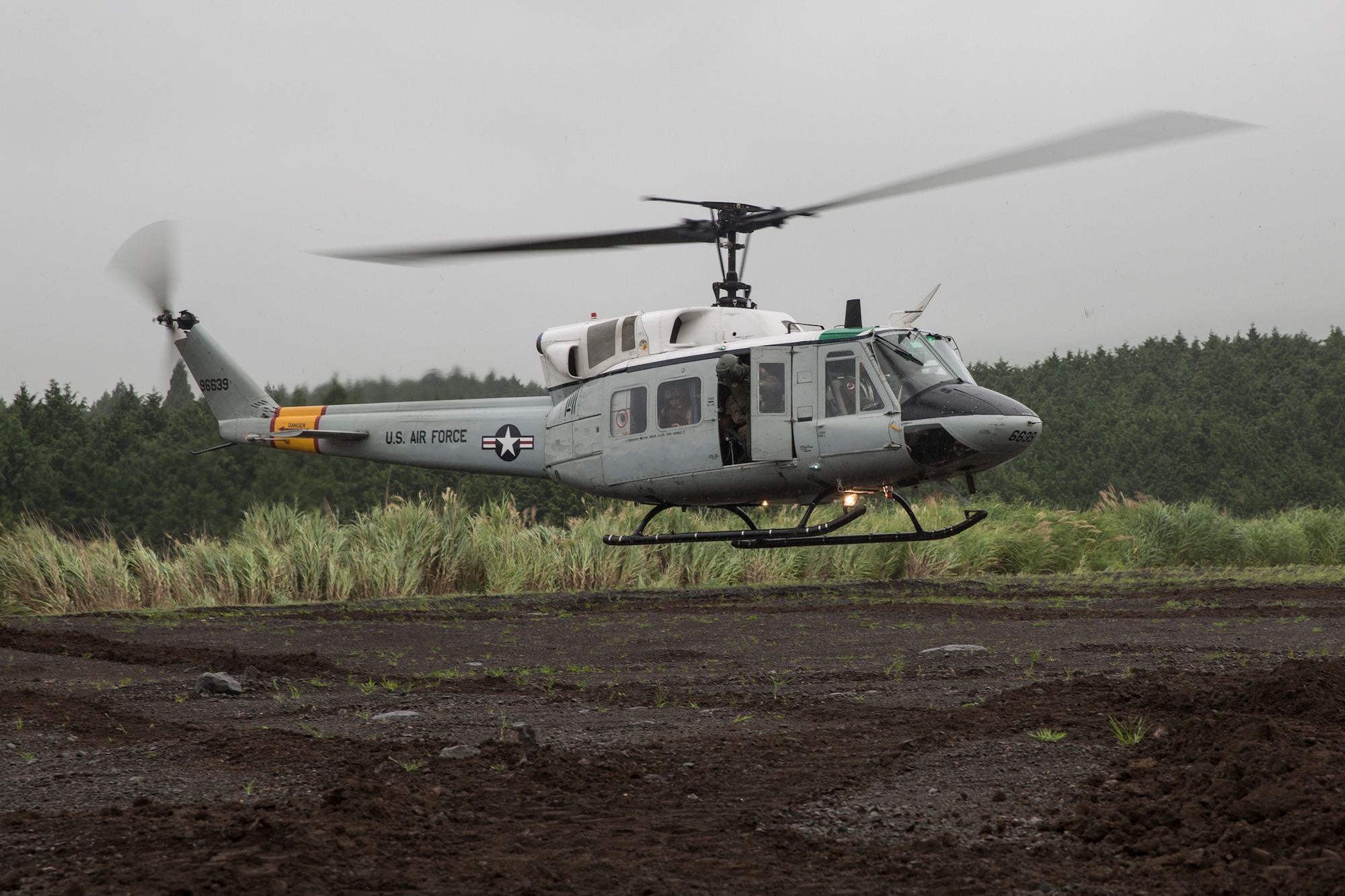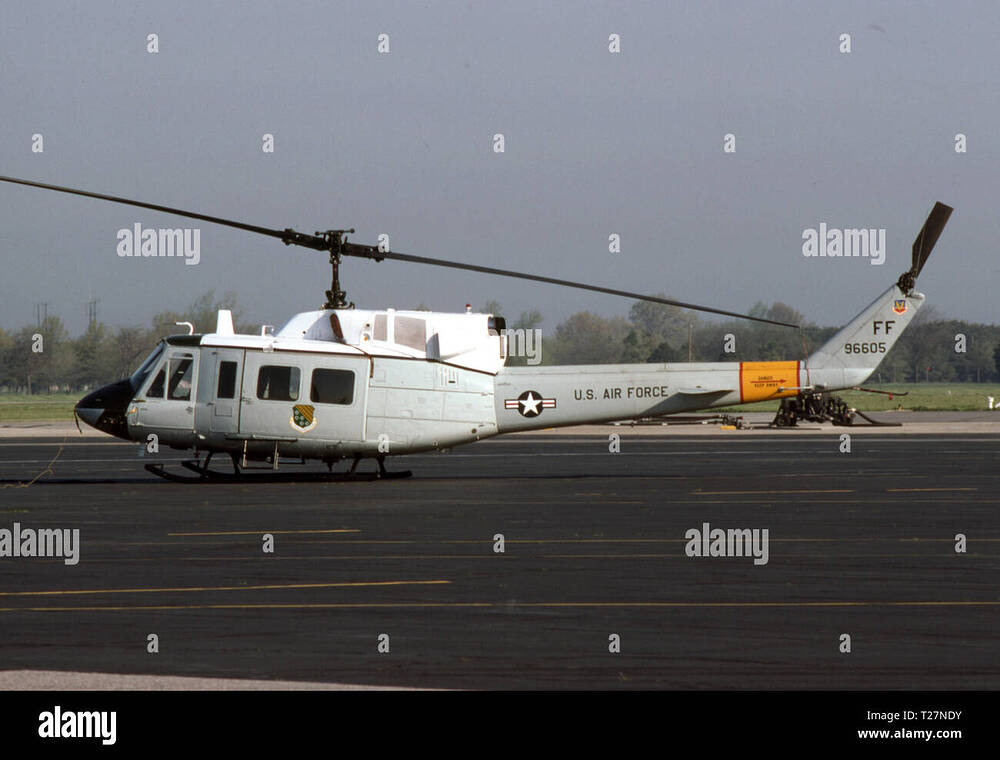
HISTORY OF THE UH-1:
The UH-1 “Huey” started its development in the 1950s when the Army determined that it needed a helicopter for medical evacuations and other general uses after the Korean War. Bell Helicopter designed the Model 204, which first flew in 1956. Its turbine engine was a big step up from older engines. It was first called HU-1, but people quickly started calling it the “Huey.” The Army also named it Iroquois, after a Native American tribe, but “Huey” was the name that stuck.
In the early 1960s, the Huey started being used in the Vietnam War and became a famous symbol that became synonymous with vietnam. At first, it carried troops and helped the wounded, but it was soon changed to do many other things. It could protect other helicopters with guns, attack ground targets with rockets and machine guns (earning nicknames like “Frog,” “Hog,” and “Gunship”), scout areas, and rescue people. The “whop-whop-whop” sound of its blades became a well-known sound of the war, and seeing Hueys carrying soldiers was a common sight.
As the Vietnam War went on, the Huey kept getting better. The extended UH-1D and H versions followed the early, shorter UH-1A, B, and C models. These longer ones could carry more soldiers and supplies and had stronger engines for the harsh conditions in Vietnam. The UH-1H became the most common type. The Huey’s ability to do many jobs was key to how the war was fought from the air, allowing troops to be moved and supported quickly. All parts of the U.S. military used the Huey a lot.
After their use in the military, the Huey became popular for civilian uses worldwide. Its strong and useful design made it great for fighting fires, rescuing people, law enforcement, carrying patients to hospitals, and general work like carrying cargo and helping with construction. Even though there are newer helicopters now, many Hueys are still being used, showing how well it was designed and how important they have been in aviation history. And the Huey series of helicopters are still useful today, many years after it was first made. It has become a true legend in the world of flying.
HISTORY OF THE UH-1N:
The UH-1N Twin Huey was created in the late 1960s because people wanted more power, reliability, and safety than the older single-engine Hueys, especially for harsh environments and flying over water. Bell Helicopter built it with a special Pratt & Whitney Canada T400-CP-400 Twin-Pac engine, which was essentially two engines combined together.
This gave the UH-1N much more power, allowed it to fly with only one engine working, and was generally safer compared to single-engine Hueys. It had a similar long body as the UH-1D so that it could carry about the same number of troops and supplies, but the more potent engine allowed it to do more different kinds of jobs.
Canada first bought the UH-1N in 1968, and soon the U.S. military, especially the Marines and the Air Force, became interested. The Marines used it to carry things and as a gunship (the AH-1J SeaCobra and later SuperCobras used the UH-1N’s engine parts). In contrast, the Air Force mostly used it to rescue people (called the HH-1N), protect bases, and transport. Because it had two engines and more power, the UH-1N was suitable for flying over water and in bad weather, letting it do more things than before.
Over time, the UH-1N has shown it can do many jobs besides carrying troops. It’s been changed to do electronic warfare, carry important people, and perform other special tasks. Even though there are newer helicopters now, the UH-1N is still used by military and civilian groups worldwide, and they often upgrade it to keep it useful in modern times. However, the UH-1N is no longer in service with the USMC and has been replaced by the UH-1Y, but is still operated by the USAF even today in limited numbers.
The UH-1N saw combat in numerous conflicts, including Afghanistan, Kuwait, and Iran. During these conflicts, it was primarily used by the USMC for troop insertion, medical evacuation, and reconnaissance. And were used until the UH-1Y was introduced into service. Essentially, it performed the jobs that the UH-1 series had always performed, just with a more modern “flare” to it. The UH-1N was one of the most notable helicopters used during the 80s and 90s by the USMC and was often credited by USMC veterans from Middle Eastern conflicts as having saved their lives multiple times.
SPECIFICATIONS (USMC version) :
Dimensions (including rotors)
Length: 17.44m
Width: 2.87m
Height: 3.9m
Rotor diameter: 14.63m
Mobility
Engines: two Pratt and Whitney T400-CP-400 turboshaft engines with 1134 shaft horsepower
Top Speed: 149 mph
Max alt: 15,000ft (4572m)
Max fuel: APPROX 3 Hours
Rate of climb: 8.92m/s
Weaponry
Guns:
GAU-16: Door-mounted 12.7mm machine gun (M2HB)
GAU-2A: Door-mounted 7.62mm “Minigun” (M134) also able to be fired by the pilot while fixed forward
M60D: Door-mounted 7.62mm machine gun (M60D)
M240: Door-mounted 7.62mm machine gun (M240)
Rockets:
LAU-68: 2x 7 FFAR (14 total capacity)
LAU-61: 2x 19 FFAR (38 total capacity)
Missiles:
NONE
Other:
Flares: (AN/ALE-29A) 2x 30 (60 total) MJU-8/B
Chaff: (AN/ALE-29A) 2x 30 (60 total) MJU-27/chaff
IRCM: Yes (ALQ-144)
RWR: Yes (APR-39)
LWS: YES (AN/AVR-2)
MAWS: Yes (AN/AAR-47)
NVD: Yes (thermals for the FLIR, night vision for the pilots)
CCIP: (rockets) Likely (not definite, but due to the trend of the UH-1’s using many of the same parts as their AH-1 counterparts, the AH-1W in this case, it likely did when also taking into account its low rocket count)
- Yes
- No
Sources
UH-1N SAC (declassified) AAHS Members Area - U.S. Navy SAC Records
https://www.af.mil/About-Us/Fact-Sheets/Display/Article/104464/uh-1n-huey/
https://www.newriver.marines.mil/About/Aircraft/UH-1N/
https://www.afgsc.af.mil/About/Fact-Sheets/Display/Article/630720/uh-1n-huey/
https://www.nhahistoricalsociety.org/uh-1n-bell-208-212-twin-huey-usmc-slick-helicopter/
UH-1N weapons loading manual (unlinked and listed here only as a citation due to it being potentially export restricted)
What it was used for
Countermeasures, and figuring out what subsystems the helicopter could use, nothing other than that













